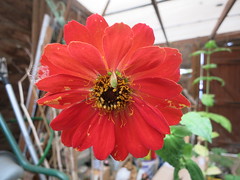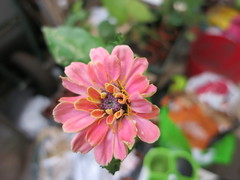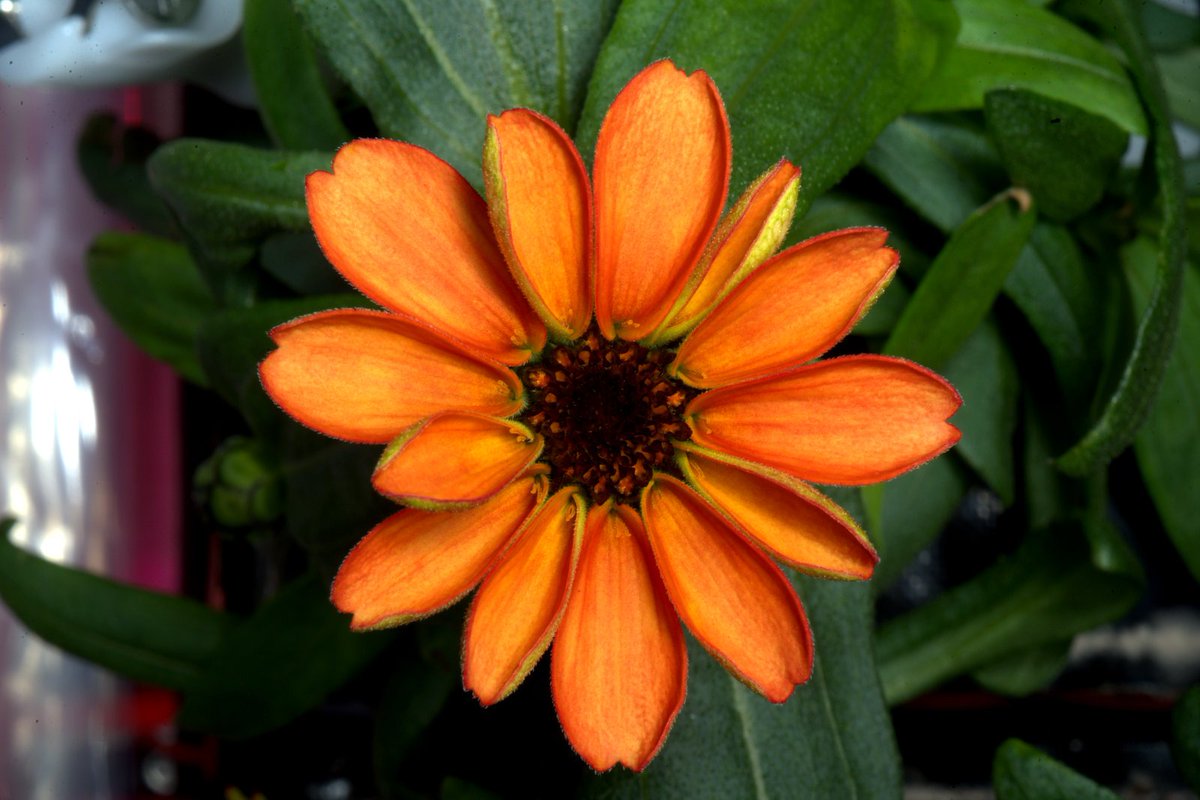Easy, it says on the packets. But every year I planted Zinnias and they didn't come up, or they sprouted and damped, or they sprouted and wilted, or they got chomped and withered. Easy. Last year, I overplanted; panicked about the watering, then got distracted and forgot them for a month, and then, finally I had my zinnias. All two of them.


As you can see, they're in the shed. My savage slugs shred them otherwise.
In space, you don't need to worry about slugs. This is the beautiful space zinnia, the first ever flower successfully grown in space. You can't see much of the foliage on my Zinnias, but they're weaklings compared to the space zinnia. Look at those lovely petals.
Gravity matters to plants. Statoliths fall to the bottom of cells in roots and stems, declaring down, asserting up. The route to this zinnia was fraught with mould, guttation and epinasty, but the astronauts made their Zinnia bloom in its red-lit growing pillows.
I usually find sunflowers grow more easily; and back in 2012 an astronaut grew one in a zip-lock bag. This one really missed the gravity, though again, I've grown worse:
This off-list experiment is recorded as The Diary of a Space Zucchini, which is written from the perspective of one of the other denizens of the zip-lock bag, another classic easy-sprouter, a courgette. It's a strangely moving piece, which acknowledges both the risks and the wonder of sending seeds out into space, and explores how deeply humans attach to other living things, even plants, even in the depths of space.

No comments:
Post a Comment